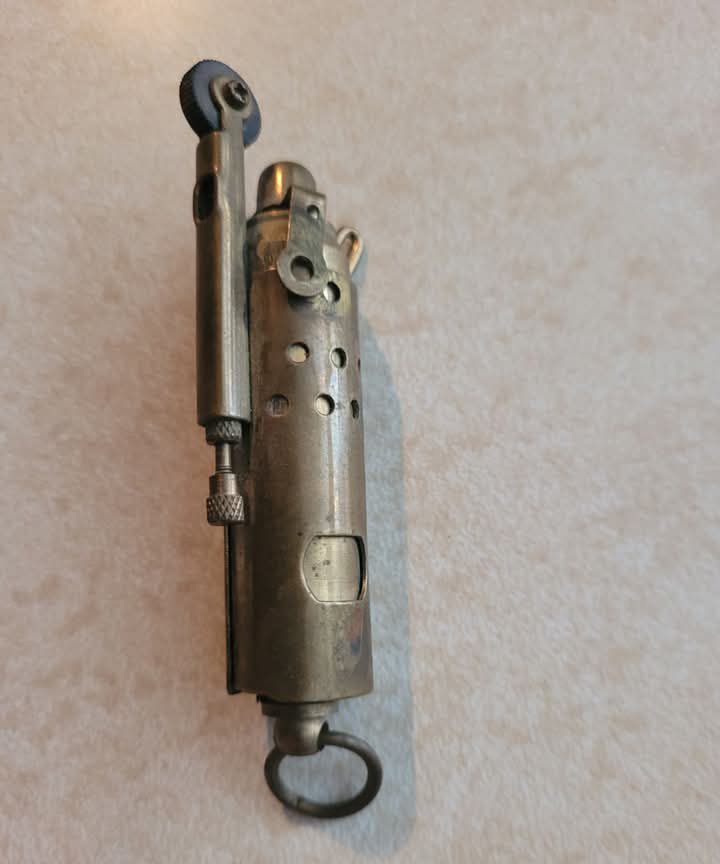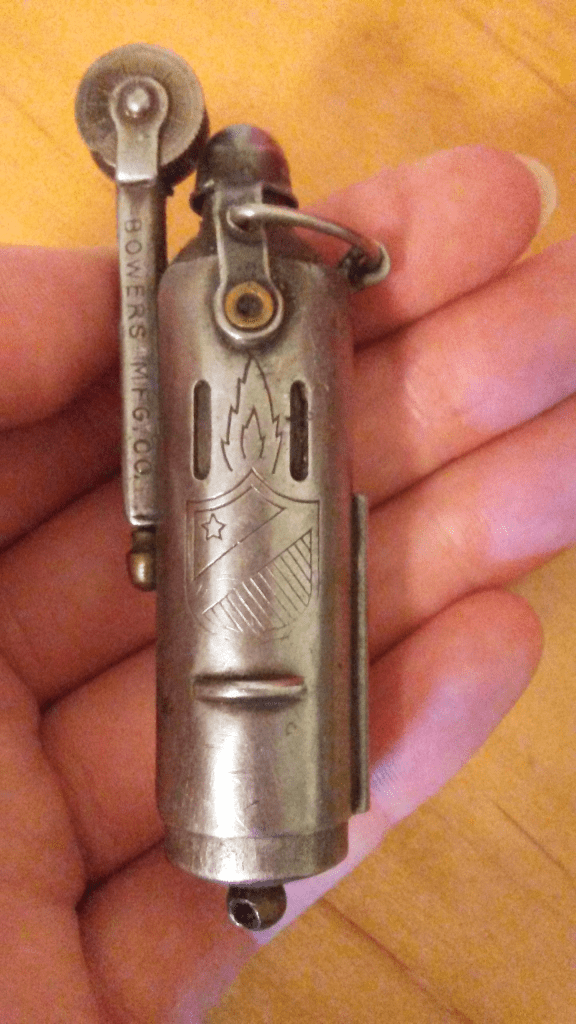
It May Look Rusty—But It Once Meant Survival
Imagine holding a tiny, battered piece of metal in your hand. At first glance, it looks like scrap—rusty, worn, forgotten by time. But for soldiers in the mud-soaked trenches of World War I and II, this little object was everything. Warmth. Light. Comfort. A slice of normalcy amid the chaos.

You’re looking at a trench lighter, also known as a vintage military lighter—a rugged, windproof, manually-operated tool that sparked more than just flames. It sparked hope.
What Is a Trench Lighter?
A trench lighter isn’t your average pocket lighter. It’s a mechanical marvel, designed to function in the worst of conditions—wind, rain, freezing cold. These lighters were small, tough, and built to be reliable when it mattered most.
Soldiers carried them everywhere. They lit cigarettes, candles, and campfires. But more than that, trench lighters lit stolen moments of peace—brief pauses where soldiers could breathe, think, or simply exist beyond survival.
Video : A rare military lighter from the past
Anatomy of a Vintage War Lighter
So what made trench lighters so different from your modern disposable lighter? Let’s break it down:
- Ignition wheel on the side: Instead of a top-mounted spark wheel like today’s lighters, trench lighters often had a side-wheel that you flicked with your thumb.
- Round air vent: This wasn’t just for style. The circular vents helped the flame resist wind—crucial when lighting up in an open field or stormy trench.
- Manual lighting system: No butane, no piezo ignition. These were classic flint-and-steel mechanisms, fully mechanical and refreshingly simple.
- Metal ring for lanyards: Soldiers clipped these onto jackets, belts, or bags so they’d never lose them—even while dodging bullets.
This wasn’t just a tool. It was a pocket-sized lifeline.
Why Soldiers Loved Their Lighters
You might be wondering: in the middle of war, why did a lighter matter so much?
Because in a world of constant noise and danger, lighting a cigarette or small fire was an act of control. It gave a soldier a few seconds to breathe. In freezing nights, it could help start a fire. In moments of fear, it could bring a flicker of calm.

That small flame reminded them of home. Of routine. Of life before the battlefield.
And because trench lighters were reusable, refillable, and durable, they became trusted companions. You didn’t just toss them. You kept them. Sometimes for years.
Built to Last—And They Did
Unlike cheap plastic lighters today, trench lighters were built to take a beating. Brass, steel, and aluminum bodies resisted corrosion. The flint and wicks could be replaced easily. And with a little maintenance, many still work today—even after nearly a century.
Collectors treasure them now not just for their rarity, but for their story. Each scratch, dent, and soot mark whispers a tale of where it’s been. Who held it. What war it survived.
That’s more than a lighter. That’s history in your pocket.
Video : The “IFA” by IMCO [1926]
From Combat Zones to Collector Shelves
Today, trench lighters are sought after by military enthusiasts, antique hunters, and vintage gear lovers alike. Some keep them as heirlooms, others as symbols of a time when life was simpler—even in the middle of hell.
They’re especially popular among:
- History buffs who want tangible links to World Wars
- Survivalists who love rugged, low-tech gear
- Collectors who crave the craftsmanship of early mechanical design
- Design nerds drawn to their industrial aesthetic
And let’s be honest—there’s something deeply cool about flipping open a metal lighter, striking a wheel, and conjuring a flame with nothing but grit and muscle memory.
A Symbol of Grit and Resilience
What makes the trench lighter so enduring isn’t just its function—it’s what it represents. Resilience in the face of destruction. Simplicity in the midst of chaos. Light in total darkness.

In many ways, the trench lighter reflects the soldier who carried it: weathered, strong, and still burning no matter the storm.
Whether clipped to a uniform, tucked into a ration pack, or passed around between comrades, this little tool carried more than flame—it carried comfort, connection, and a sense of humanity.
Final Thoughts: The Flame That Never Quit
So the next time you see a rusty old lighter at a flea market, don’t walk past it. Pause. Look closer.
Because beneath that tarnished shell is a legacy—a flame that once cut through war-torn nights, passed from hand to hand, lighting more than just cigarettes.
It lit memories. It lit nerves. It lit the human spirit.
And it’s still burning.




